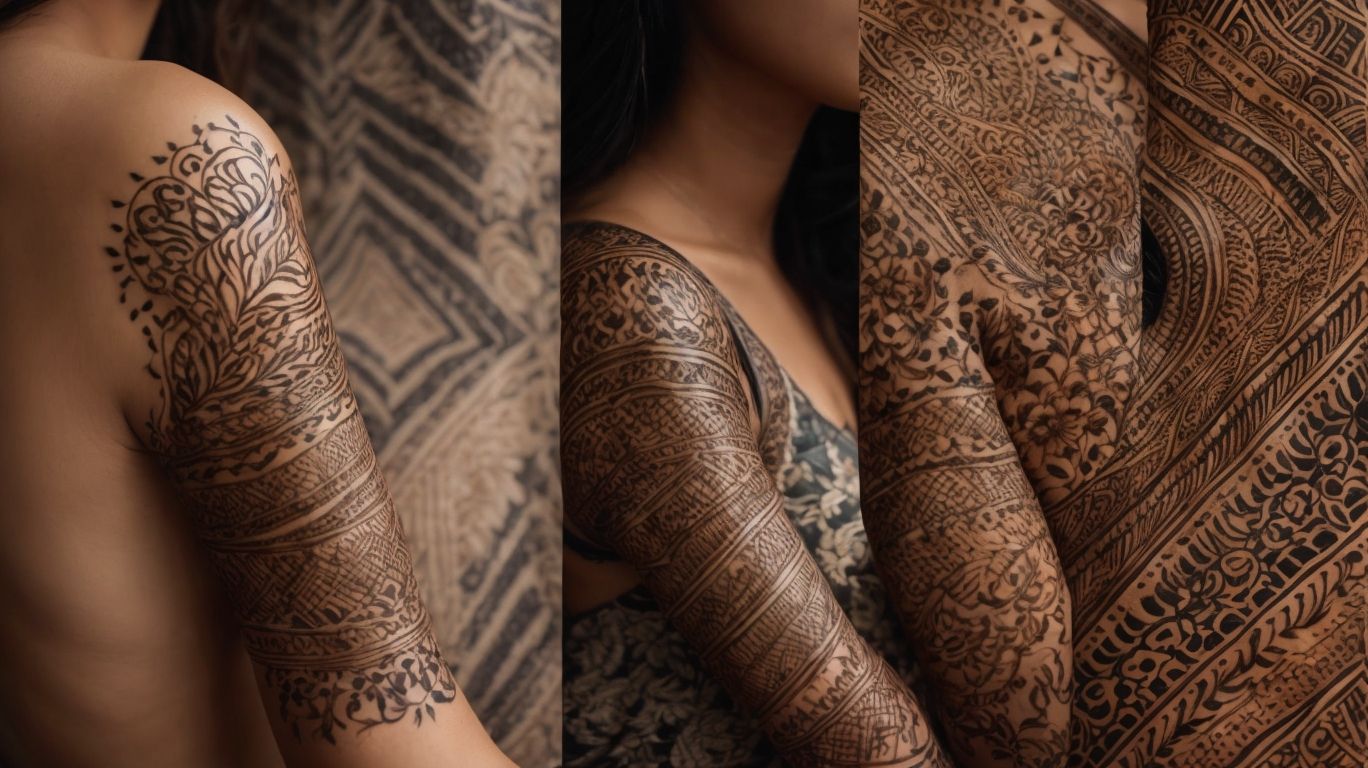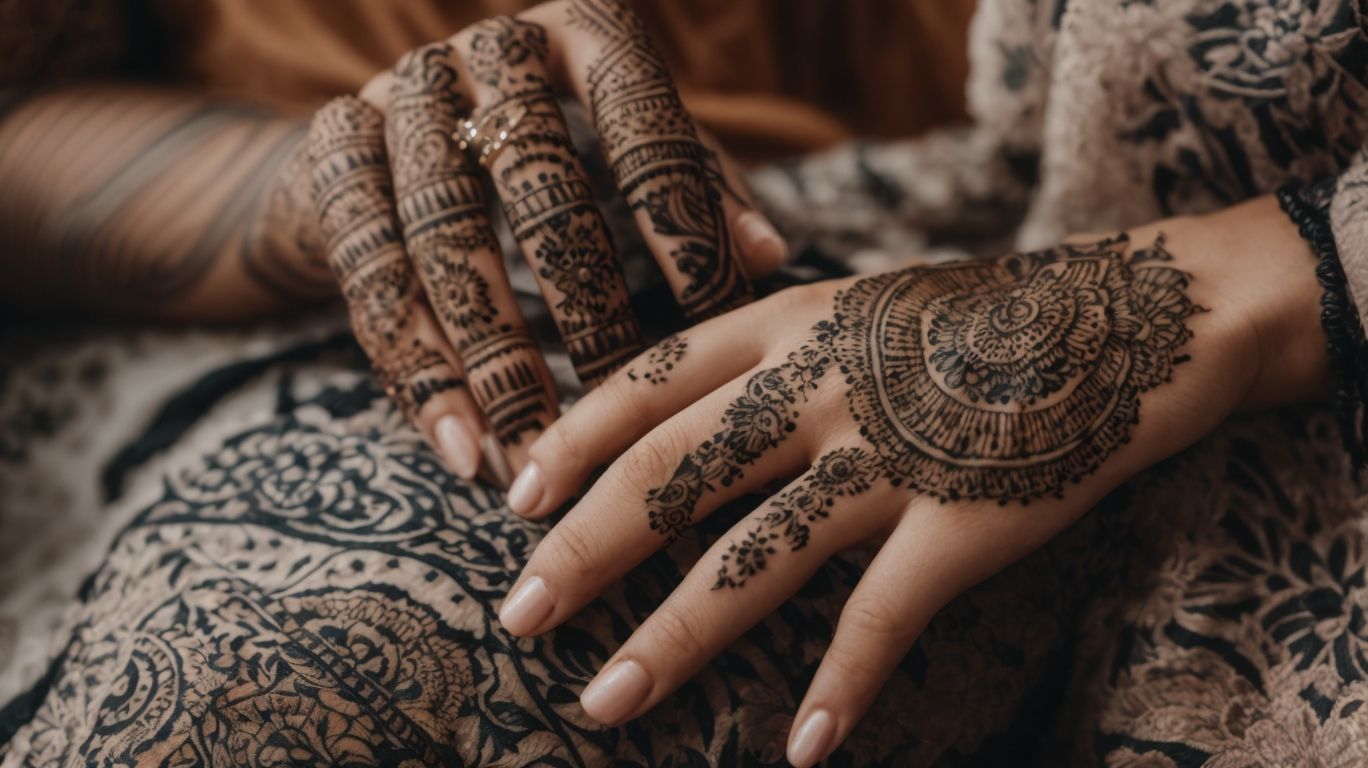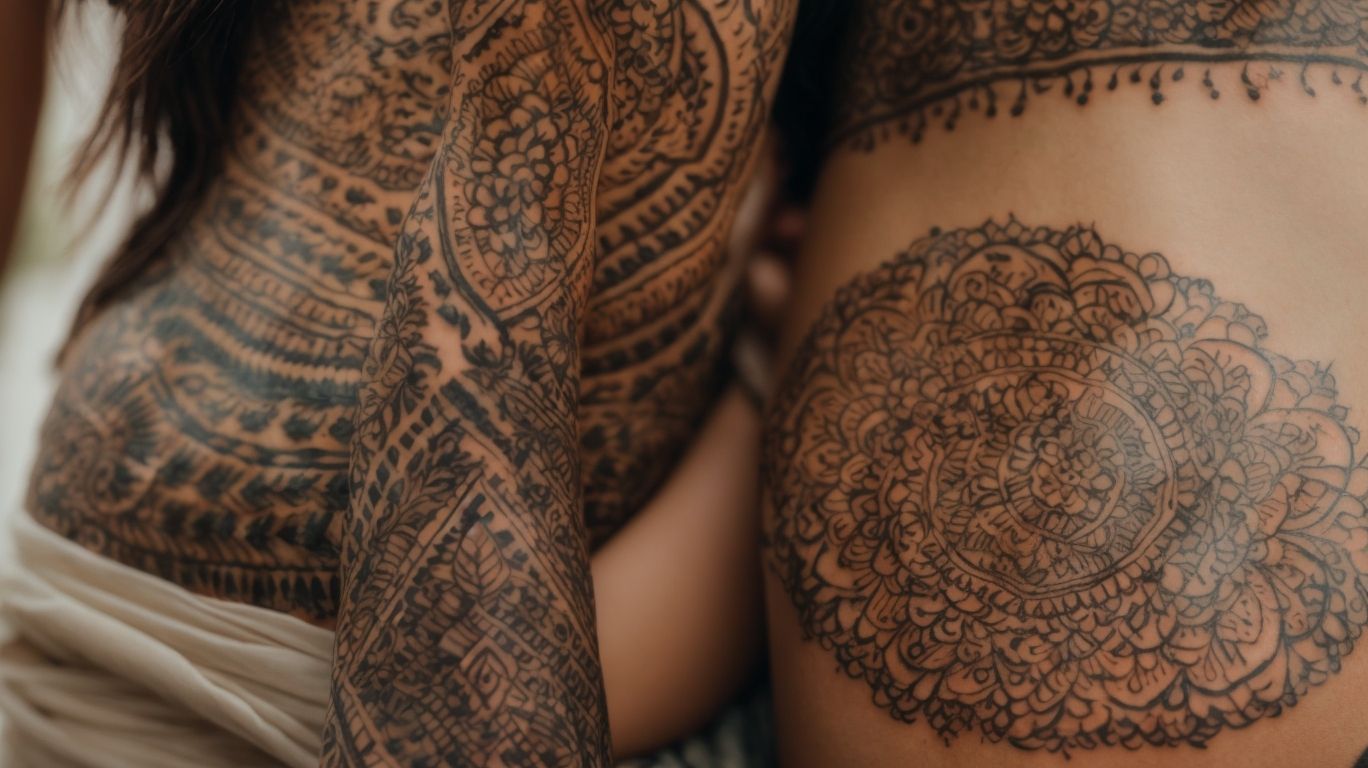Are you curious about the differences between henna and jagua for body art? From their origins and geography to their coloring properties and application techniques, this article covers everything you need to know.
Discover how to choose between henna and jagua, and learn about aftercare, possible allergic reactions, and product shelf life. Whether you’re a beginner or a seasoned artist, this guide will help you make informed decisions and create stunning body art.
Key Takeaways:
- Henna and Jagua originate from different plants and have different cultural and geographical origins.
- Henna and Jagua have different material compositions and require different preparation techniques before application.
- Henna creates a reddish-brown stain while Jagua creates a bluish-black stain, and the results can vary based on skin type and application technique.
The Difference Between Henna and Jagua
Understanding the difference between Henna and Jagua is essential for those looking to explore temporary tattoos. While both offer natural staining for the skin, they possess distinct characteristics that set them apart.
Henna, derived from the leaves of the Lawsonia inermis plant, has been used for centuries in various cultural rituals and celebrations. Originating from regions like North Africa, South Asia, and the Middle East, Henna holds significant cultural symbolism, often used in weddings and festivals. Jagua, on the other hand, comes from the juice of the Genipa americana fruit, native to South America. It has a deep blue-black color when applied to the skin, offering a unique alternative to the reddish-brown hue of Henna.
Origins and Geography
Henna and Jagua have fascinating origins rooted in different parts of the world. Henna traces its heritage to North Africa and the Middle East, while Jagua finds its origins in the lush landscapes of South America.
Material and Preparation
The material and preparation methods for Henna and Jagua play a crucial role in achieving vibrant and long-lasting color on the skin. While Henna is derived from the Lawsonia inermis plant, Jagua comes from the Genipa Americana tree.
Coloring Properties and Results
The coloring properties of Henna and Jagua yield striking results on the skin, with each offering unique shades and hues. Despite their differences, both share similarities in delivering rich and natural-looking colors.
Application Technique
Mastering the application technique is key to achieving flawless Henna and Jagua designs on the skin. Skilled artists utilize precise methods to create intricate patterns and detailed motifs that showcase the beauty of these temporary tattoos.
Setting Time and Duration
The setting time and duration of Henna and Jagua tattoos influence the depth of color and longevity of the designs. Understanding how long each type needs to set allows for optimal results and lasting beauty.
Aftercare, Removal, and Fixatives
Credits: Trixtan.Com – Charles Miller
Proper aftercare and removal techniques are essential for maintaining the vibrancy of Henna and Jagua tattoos while minimizing allergic reactions. It’s crucial to avoid products containing PPD and to follow specific guidelines for safe tattoo care.
Possible Allergic Reactions
Credits: Trixtan.Com – Joshua Harris
While Henna and Jagua are generally safe for most individuals, there is a risk of allergic reactions, particularly for those with sensitive skin conditions like Eczema. Understanding the signs of potential allergies is crucial for safe tattoo application.
Choosing Between Henna and Jagua
Deciding between Henna and Jagua tattoos can be a personal choice based on preferences and desired outcomes. While both offer natural and temporary body art options, understanding their similarities and differences can help in making an informed decision.
Product Shelf Life
The shelf life of Henna and Jagua products varies, impacting their effectiveness and color quality over time. Proper storage and handling play a vital role in maintaining the integrity of these natural tattoo materials.
Community and Resources
The Henna and Jagua tattoo community offers a wealth of resources and support for enthusiasts looking to explore these natural body art forms. Places like New Delhi serve as hubs for artists and aficionados to connect and share their passion.
In New Delhi, artists not only showcase their talents but also impart traditional techniques to eager learners. Regular workshops and gatherings allow individuals to delve deeper into the cultural significance of these art forms, fostering a sense of belonging and understanding within the community.
The shared knowledge among practitioners plays a pivotal role in preserving age-old traditions and techniques, ensuring that the art of Henna and Jagua tattoos continues to flourish across generations.
Customer Care and Support
Exceptional customer care and support are vital in the world of Henna and Jagua tattoos, ensuring clients receive guidance, assistance, and quality products. Events like Vidcon provide platforms for showcasing customer-centric services in the body art industry.
In the Henna and Jagua tattoo business, knowing the intricacies of customer care can set a business apart. From prompt responses to inquiries to personalized recommendations for designs, every interaction shapes the client’s experience. Establishing trust through transparency and open communication is key to fostering long-term relationships.
Attending industry events like Vidcon not only offers networking opportunities but also insights into emerging trends and customer preferences. Engaging with clients on social media platforms further enhances the sense of community and appreciation for their unique body art journeys.
Frequently Asked Questions
What is the difference between Henna and Jagua?
Both Henna and Jagua are natural dyes used for body art, but they come from different plants. Henna comes from the plant Lawsonia inermis, while Jagua comes from the Genipa americana tree.
What color do Henna and Jagua create?
Henna creates a reddish-brown color, while Jagua creates a bluish-black color.
How long do Henna and Jagua tattoos last?
Henna tattoos typically last 1-3 weeks, while Jagua tattoos can last 2-3 weeks.
Can Henna and Jagua be mixed together?
Yes, Henna and Jagua can be mixed together to create a unique color for body art.
Are there any risks associated with Henna and Jagua?
Henna and Jagua are generally safe to use, but some people may experience allergies or skin sensitivities. It is important to test a small area before applying to the entire body.
Which is more commonly used for body art, Henna or Jagua?
Henna is more commonly used for body art, as it has been used for centuries in traditional cultures for its natural dye properties. Jagua is a newer trend in body art and is gaining popularity.



